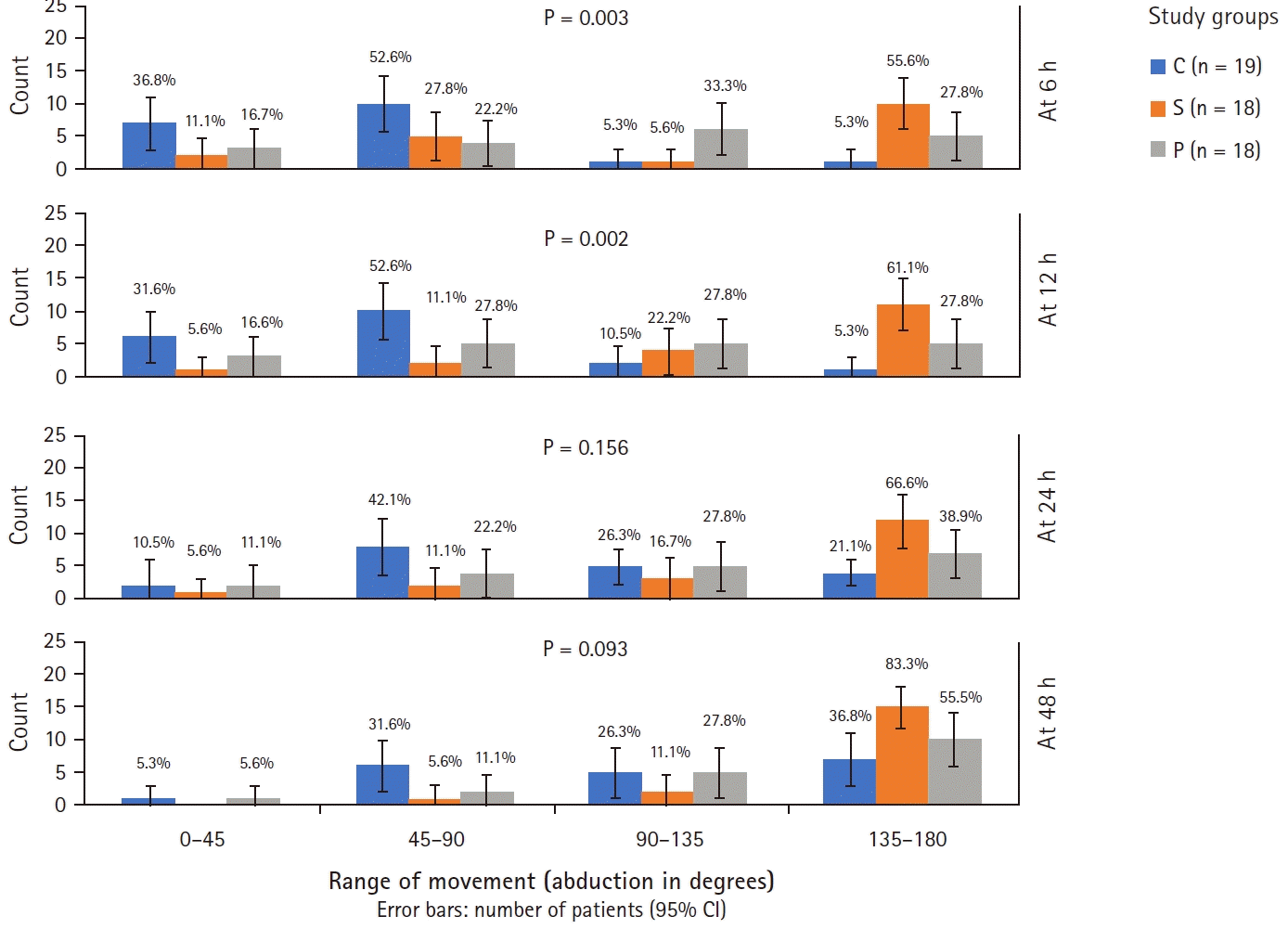1. Mejdahl MK, Andersen KG, Gärtner R, Kroman N, Kehlet H. Persistent pain and sensory disturbances after treatment for breast cancer: Six year nationwide follow-up study. BMJ. 2013; 346:f1865.

2. Fecho K, Miller NR, Merritt SA, Klauber-Demore N, Hultman CS, Blau WS. Acute and persistent postoperative pain after breast surgery. Pain Med. 2009; 10:708–15.

3. Legeby M, Segerdahl M, Sandelin K, Wickman M, Ostman K, Olofsson Ch. Immediate reconstruction in breast cancer surgery requires intensive post-operative pain treatment but the effects of axillary dissection may be more predictive of chronic pain. Breast. 2002; 11:156–62.

4. Huang CC, Sun WZ, Wong CS. Prevention of chronic postsurgical pain: the effect of prevention and multimodal analgesia. Asian J Anesthesiol. 2018; 56:74–82.
5. Rawal N. Acute pain service: Organization, function, & implementation. In: Textbook of Regional Anesthesia and Acute Pain Management. Hadzic A, editor. New York: McGraw-Hill Medical;2007. p. 1126.
6. Blanco R, Barrington MJ. Pectoralis and serratus plane blocks. In: Hadzic's Textbook of Regional Anesthesia and Acute Pain Management. 2nd ed. Hadzic A, editor. New York: McGraw-Hill;2017. p. 653.
7. Freise H, Van Aken HK. Risks and benefits of thoracic epidural anaesthesia. Br J Anaesth. 2011; 107:859–68.

8. Blanco R, Parras T, McDonnell JG, Prats-Galino A. Serratus plane block: a novel ultrasound-guided thoracic wall nerve block. Anaesthesia. 2013; 68:1107–13.

9. Selvi O, Tulgar S, Senturk O, Serifsoy TE, Thomas DT, Deveci U, et al. Is a combination of the serratus intercostal plane block and rectus sheath block superior to the bilateral oblique subcostal transversus abdominis plane block in laparoscopic cholecystectomy? Eurasian J Med. 2020; 52:34–7.

10. López-Matamala B, Fajardo M, Estébanez-Montiel B, Blancas R, Alfaro P, Chana M. A new thoracic interfascial plane block as anesthesia for difficult weaning due to ribcage pain in critically ill patients. Med Intensiva. 2014; 38:463–5.

11. Kumar R, Nath SS, Agarwal A. Intraperitoneal nebulization versus intraperitoneal instillation of ropivacaine for postoperative pain management following laparoscopic donor nephrectomy. Korean J Anesthesiol. 2019; 72:357–65.

12. Fajardo M, López S, Diéguez P, Alfaro P, García FJ. A new ultrasound-guided cutaneous intercostal branches nerves block for analgesia after non-reconstructive breast surgery. Cir Mayor Ambulatoria. 2013; 18:3–6.
13. Abdallah FW, Cil T, MacLean D, Madjdpour C, Escallon J, Semple J, et al. Too deep or not too deep?: a propensity-matched comparison of the analgesic effects of a superficial versus deep serratus fascial plane block for ambulatory breast cancer surgery. Reg Anesth Pain Med. 2018; 43:480–7.
14. Yoon HS, Yu BW, Kim YM, Lee JH, Koh WU, Yang HS. Serratus anterior plane block combined with monitored anesthesia care for surgery of lateral side of breast -a case report. Korean J Anesthesiol. 2019; 72:500–3.

15. Bhoi D, Selvam V, Yadav P, Talawar P. Comparison of two different techniques of serratus anterior plane block: a clinical experience. J Anaesthesiol Clin Pharmacol. 2018; 34:251–3.
16. Stuiver MM, Ten Tusscher MR, Agasi-Idenburg CS, Lucas C, Aaronson NK, Bossuyt PM. Conservative interventions for preventing clinically detectable upper-limb lymphoedema in patients who are at risk of developing lymphoedema after breast cancer therapy. Cochrane Database Syst Rev. 2015; (2):CD009765.

17. Langford R, Brown I, Vickery J, Mitchell K, Pritchard C, Creanor S. Study protocol for a double blind, randomised, placebo-controlled trial of continuous subpectoral local anaesthetic infusion for pain and shoulder function following mastectomy: SUB-pectoral Local anaesthetic Infusion following MastEctomy (SUBLIME) study. BMJ Open. 2014; 4:e006318.

18. Mathew R, Radha KR, Hema VR. Effect of perineural and intravenous dexamethasone on duration of analgesia in supraclavicular brachial plexus block with bupivacaine: a comparative study. Anesth Essays Res. 2019; 13:280–3.

19. Knezevic NN, Anantamongkol U, Candido KD. Perineural dexamethasone added to local anesthesia for brachial plexus block improves pain but delays block onset and motor blockade recovery. Pain Physician. 2015; 18:1–14.
20. Daga V, Narayanan MK, Dedhia JD, Gaur P, Crick H, Gaur A. Cadaveric feasibility study on the use of ultrasound contrast to assess spread of injectate in the serratus anterior muscle plane. Saudi J Anaesth. 2016; 10:198–201.

21. Scaffidi M, Vulpiani MC, Vetrano M, Conforti F, Marchetti MR, Bonifacino A, et al. Early rehabilitation reduces the onset of complications in the upper limb following breast cancer surgery. Eur J Phys Rehabil Med. 2012; 48:601–11.
22. Khemka R, Chakrborty A, Agrawal S, Ahmed R. Is COMBIPECS the answer to perioperative analgesia for breast surgery? A double blinded randomized controlled trial. Indian J Anaesth. 2019; 63:530–6.

23. Torres Lacomba M, Mayoral Del Moral O, Coperias Zazo JL, Yuste Sánchez MJ, Ferrandez JC, Zapico Goñi A. Axillary web syndrome after axillary dissection in breast cancer: a prospective study. Breast Cancer Res Treat. 2009; 117:625–30.






 PDF
PDF Citation
Citation Print
Print




 XML Download
XML Download